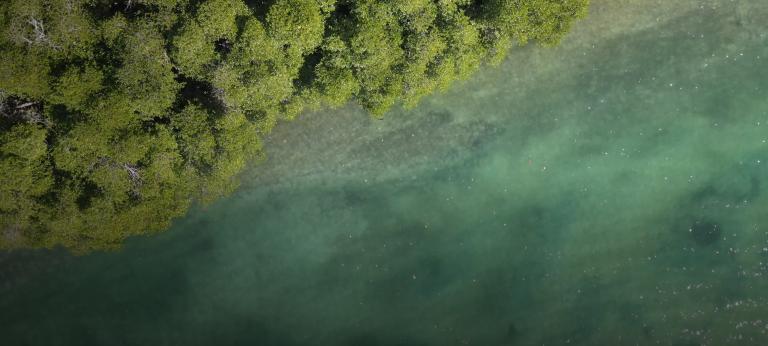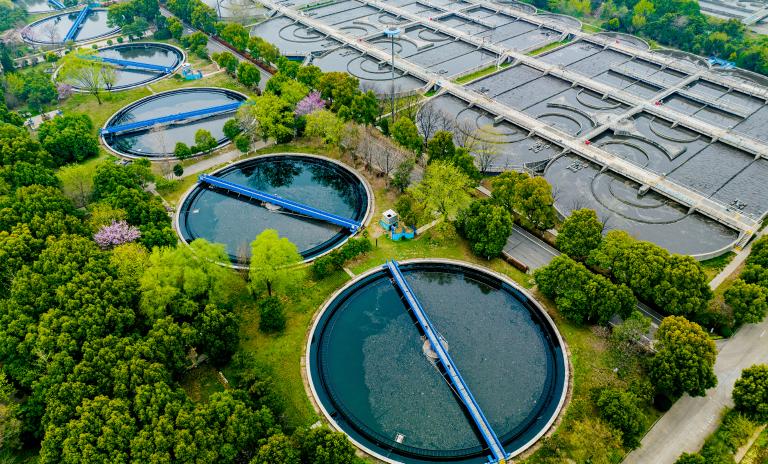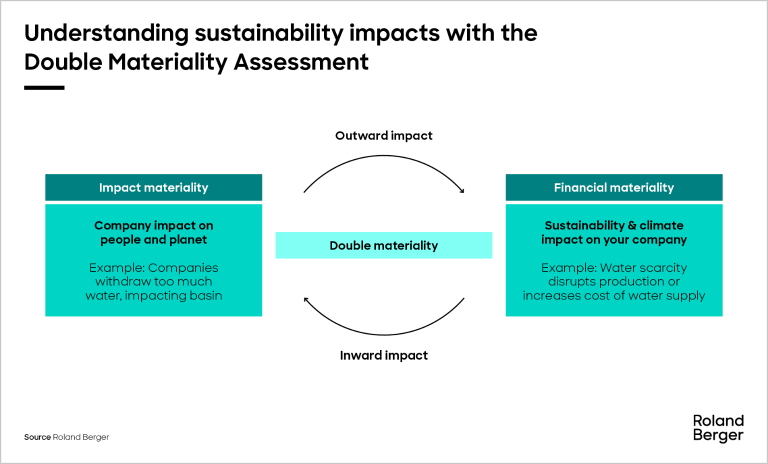Water Management
Action on water management is required from all members of society. Companies have a special responsibility to address the challenges ahead and can make valuable contributions to sustainability.


Water-related risks have the potential to impact almost every aspect of your business –necessitating a holistic mitigation approach. In this article, we look at the importance of managing both upstream and downstream challenges, and why the quality of the water you take it is just as important as the wastewater you push back out.

There’s an old story with which you may be familiar; recounting a little Dutch boy who saved his city from a massive flood. After noticing a crack in the dike, the boy uses his finger to plug the hole until help arrives, preventing the wall from collapsing beneath the weight of the sea. It may be a children’s tale, but the story also has relevance for businesses today.
The world now faces other water threats – not just from flooding, but from drought and water scarcity, pollution, ageing water infrastructure, growing water demand, and climate change. While the boy in the story was deemed a hero for preventing an imminent catastrophe, businesses that focus only on ‘plugging holes’ in the context of water risk are unlikely to receive similar commendations.
The world of water is growing riskier by the day. More than a third of the world’s largest aquifers are already depleted to the extent that they threaten regional water availability. By 2030 – just a few short years way – experts predict a 40% shortfall in global water supply and by 2050, it’s estimated that 75% of the world’s population may face drought, with the other 25% experiencing direct flood risks.
To succeed in this context, businesses must look beyond their own immediate needs and consider the wider context of water risk for their business and their relationship with the water basins on which they depend. To best understand the potential impact, there are two major factors to consider; first, your business’s ability to ensure the inflow of quality water and second, its ability to mitigate the impact of wastewater effluent it puts back out.
Water is the lifeblood of countless industrial processes. Securing a steadfast and high-quality water supply is paramount for growing enterprises. Understandably, this is where most businesses start when it comes to water risk; ensuring they have access to a reliable source of fresh water that meets their quality standards. Most primarily focus on ‘on-site’ water issues, such as upgrading aging infrastructure, adopting improved processes or new technologies to optimize the water intensity of products, fixing leaks to minimize losses, and treating intake water to meet process requirements.
But businesses have a misplaced confidence in the continued availability of water as utilities have generally always provided it and the costs have been kept low. The reality is that it might not always be case. Water cannot be taken for granted as a ‘business as usual’ resource.
The current quantity or quality of water you’ve become accustomed to may not be what is available in the future – for a variety of reasons. Drought may cause the feeder rivers or upstream sub-basins from which your source receives water to dry up or pollution may impact the quality of water you receive. New regulations may increase the costs of accessing the water you need or limit how much you can withdraw. In short, even if your individual site’s risk profile appears to be low; the basin on which it relies on could be under high water stress. Leaders who keep their eyes focused ‘inside the fence’ are likely to be caught off guard, particularly when more stringent regulations come into effect.
For instance, China will strengthen its water use efficiency targets as part of its “three red lines” policy for controlling the development and utilization of water resources, referring to the maximum water use per economic value of production. By 2030, water consumption per ten thousand yuan of industrial added value will be reduced to less than 40 cubic meters. This will force the hand of any business that’s not already taking action to increase its water efficiency.
Another example is the ‘double materiality assessment’ under the EU’s Corporate Sustainability Reporting Directive (CSRD), whereby companies reporting on sustainability need to assess how their actions impact people and the environment, as well as the financial impact on its business. This will push companies to establish mitigation actions to lessen the potential financial burden of water scarcity, the degradation of water sources, or flooding.

In this landscape, water security (in terms of access to adequate water supplies) demands that leaders look ‘outside the fence’ to consider the needs of, and the stressors placed on, the water basins on which they rely. With a full picture of the potential risks, both immediate and long-term, businesses can then begin to build true water resilience; ensuring they have the flexibility and redundancies in place to withstand external shocks and adapt to a changing climate and volatile market conditions.
There are many potential solutions companies can explore to ensure the security of the water basins upon which they rely. Anheuser-Busch InBev, a Belgian brewing company, tailors water solutions to local basin needs, using a seven-step watershed management process that starts with stakeholder outreach. In Peru, they have worked to restore 13km of ancestral water channels and infiltration systems (amunas) in the Rimac basin (as of 2021). The move also improves water availability in the dry season, benefiting the local community and their own operational security.
Toyota has defined its water strategy based on conservation, quality, and ecosystems, and has financially supported The Nature Conservancy (TNC) on a number of projects to improve basin health. The company provided $100,000 in funding towards the restoration of the Colorado River Delta to help secure sufficient water and reliable supplies for people and nature through work with local partners, cities, and the agricultural sector.
What goes in, must come out, which is why the challenge of effectively managing your water risk extends beyond mere consumption. Wastewater effluent is a pivotal factor in reducing a business’s overall water risk, yet many companies fail to consider wastewater discharge as a potential risk to their business operations and reputation. Around 80% of the world’s wastewater is discharged back to the environment without any treatment. In fact, of the companies that report to CDP on their water risk, (a critical early step on the pathway to water leadership), 42% don’t monitor their wastewater discharge at all and only 12% set targets related to water pollution in 2022.
Ignoring your wastewater treatment and discharge brings significant risks across various aspects of your business. Untreated discharge can pollute water sources and the surrounding environment; potentially resulting in reputational damage, penalties, fines, or lost shareholder value.
Most importantly, unmanaged wastewater discharge carries serious environmental and health risks, with toxic pollutants capable of harming aquatic life, damaging ecosystems, and potentially threatening downstream communities by reducing water quality and spreading waterborne diseases.
For those who have yet to prioritize managing their wastewater or who are operating in less regulated environments, the focus should be taking responsibility for your effluent – whether you are discharging to the environment or a third-party waste handler. Many companies start by trying to reduce the overall volume of discharge, typically by increasing water recycling and reuse initiatives. It is also important to minimize the pollutants in the effluent, by reviewing your industrial processes, the chemicals used and by sourcing alternative ingredients, where possible.
For those who are compliant with existing regulations, the challenge is maintaining compliance in the face of changing regulations and market conditions. Your sites may be 100% compliant according to today’s wastewater treatment management standards, however, you may face new disclosure requirements and/or regulations in the future relating to emerging contaminants that will require actions to comply. New regulations such as the EU’s Corporate Sustainability Reporting Directive (CSRD) begin to take effect this year and require greater focus and commitment to managing and monitoring both water consumption and wastewater discharge, as specified in the detailed reporting guidelines (European Sustainability Reporting Standards, ESRS).
Given the lack of attention that has been given to wastewater historically, this change presents an opportunity for companies to lead, establish best practices to become role models for others, and initiate collective action to address potential impacts of wastewater on our environment.
There are a few organizations working toward ‘best practice’ standards for wastewater discharge. In its 2030 strategy, fashion retailer H&M Group set its commitment to improving and monitoring discharge quality, including across its suppliers. The plan focuses on the impact of its effluent on receiving water bodies (both direct to nature or via wastewater treatment providers) and more broadly, decoupling its growth from its water use.
Largely driven by significant water use and its commitment to replenishing 100% of the water needed to make its finished beverages, Coca-Cola has developed water management goals that, incidentally, result in strong wastewater management practices and a circular, ‘outside-the-fence’ approach. Water used in its manufacturing process is treated to a quality supportive of aquatic life before being returned to nature or the local municipality.
Supported by a $1bn investment, this has shifted wastewater treatment to become a standard operating requirement at Coca-Cola, with 99% of plants being served by onsite wastewater treatment plants. In addition, Coca-Cola engages in outside-the-fence projects to replenish the water used in its projects to communities and nature, such as via watershed protection and WASH activities.
Companies who are well-informed about their external water risk picture and are ahead of new regulatory requirements, such as the EU CSRD, are well-positioned to not only mitigate water risk and ensure operational continuity but to become leaders in showcasing best practices to counterparts. By considering the full water cycle, both within and beyond the operational boundary, companies can scale their impact and play an instrumental role in collective action to influence our environment positively.
Stay current with our latest insights on water, sustainability and climate action topics. We will email you when new articles and studies are published.